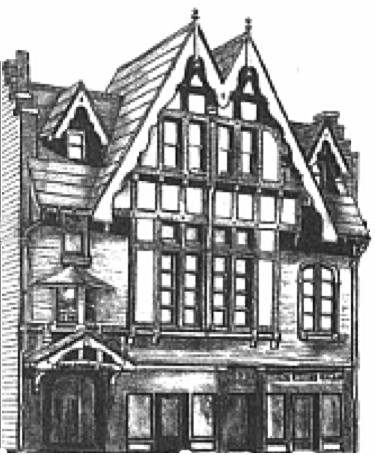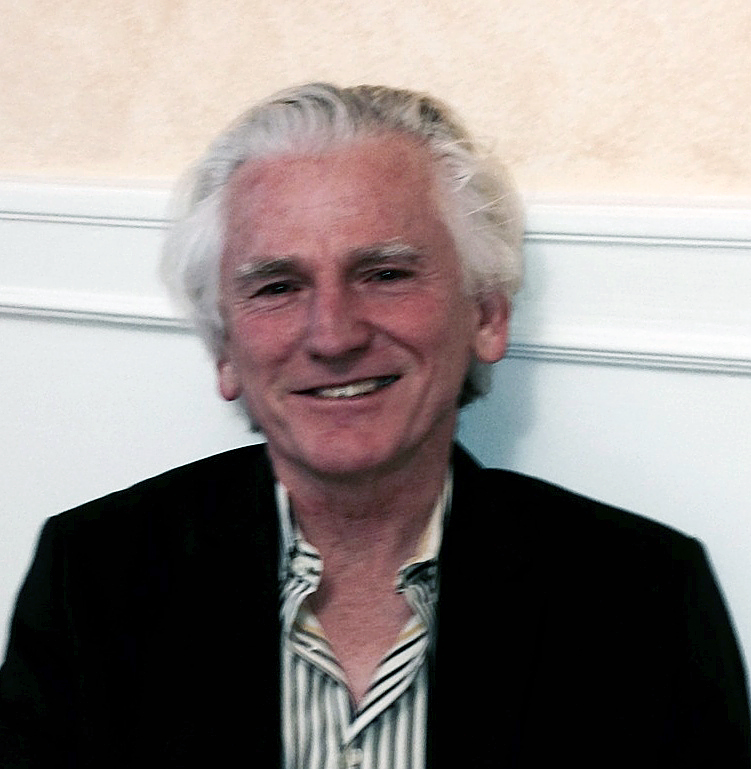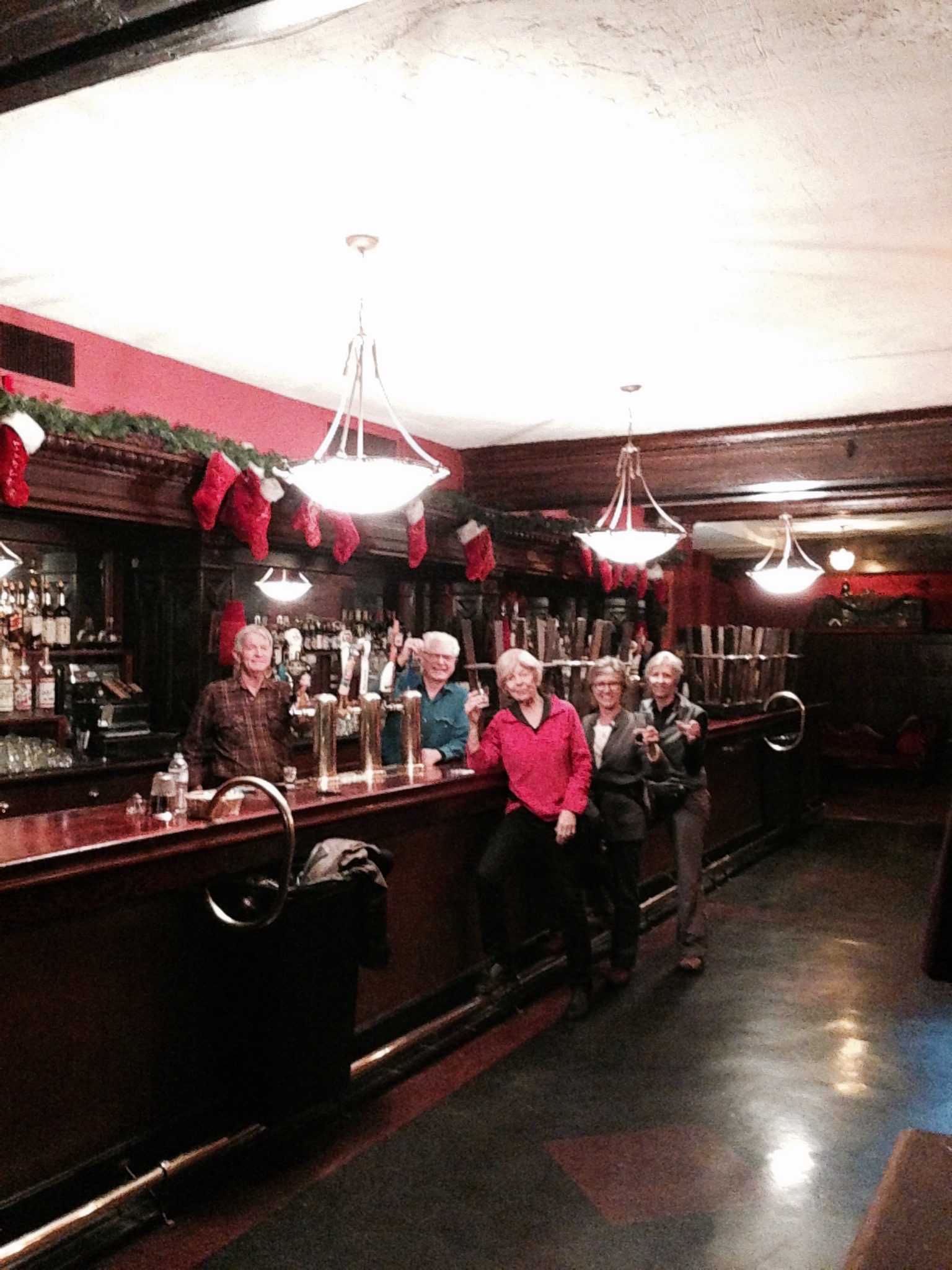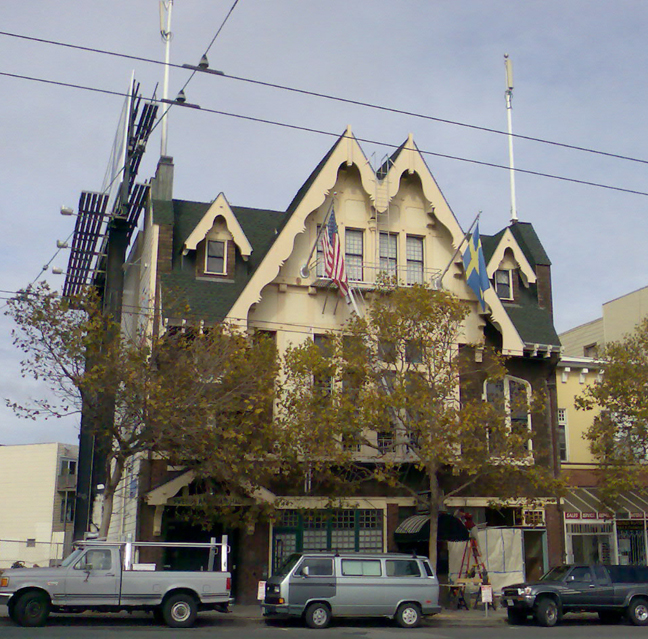Makeover of a Stronghold
A stronghold has a new lease on life for the 21st century. San Francisco’s Swedish American Hall has been used as a meeting place for many generations. A makeover is planned for spring, 2014.
-
 August Nordin's concept for the 1907 Swedish-American Hall. Image: The Swedish Society
August Nordin's concept for the 1907 Swedish-American Hall. Image: The Swedish Society -
-
San Francisco’s Swedish American Hall has been used as a meeting place for many generations of Swedish Americans. Built in 1907, the hall was designed by noted Swedish architect August Nordin, who designed more than 300 buildings in San Francisco. With its old world charm and diverse areas to meet and celebrate, it represents the heart and soul of the lively Swedish American community.
Now, following a change in management, the building will go through a long awaited and much needed restoration, which will close the venue for up to six months. The building is expected to open again for the local clubs and organizations in the summer. -
 Guy Carson, master musical impresario of Cafe Du Nord, San Francisco (2002-2013). Photo:Ted Olsson, 2014.
Guy Carson, master musical impresario of Cafe Du Nord, San Francisco (2002-2013). Photo:Ted Olsson, 2014. -
-
The Swedes of San Francisco met in a variety of locations, including across the street from the newly constructed City Hall, before 1906. After the catastrophic earthquake and fire of that year destroyed one quarter of the city, the Swedes re-established their center in the spared Upper Market Street area, from Church to Castro streets, anchored by Vestkusten Swedish newspaper and a new hall. In that year the oldest local Swedish organization, the Swedish Society, began construction of its magnificent Swedish-American Hall.
Beroza records the early history — the property was purchased on July 26, 1906 for $12,000. The building on the lot was moved and a magnificent new Nordic-inspired building, designed by the distinguished local Swedish-American architect, August Nordin, was erected. During this reconstruction period, such an expensive project was made possible by a loan of $40,000 to the society for this purpose by Erik O. Lindblom, “The Lucky Swede,” who had struck it rich during the Alaska Gold Rush. The Swedish-American Hall was completed in less than a year and dedicated on December 22, 1907. By its 25th anniversary, the society paid off its loan with interest.
For more than a century, this venerable building has hosted all manner of events from routine meetings to festive celebrations and royal receptions. Hardly a Swede or Swedish-American here for more than a decade doesn’t have fond memories of it.
The building consists of three addresses. The famous Café Du Nord, bar and bistro in the basement began as early as the hall. Flanking the descending stairs were two commercial stores for rent—and both were converted during the last decade: The one on the right of the building became a sidewalk café, and the one to the left of the stairs was converted into a reception area with an office in the back.
To the far left of the building is the entrance to the hall and its salons. The hall itself consists of a large salon (Odin) at the back of the first floor with an adjacent kitchenette. Up the broad stairs on the left of the building is the huge Freja Hall (ballroom and balcony) in the back of the building, and the large Balder Hall facing the street from the second floor. Above this on the mezzanine is the Valhalla dining room and kitchen. Far up on the top floor are the society’s boardroom and library plus the Archives (Svea) lounge. These comfortable last two rooms will be reserved for traditional Scandinavian clientele. -
 Swedish Society members toast the new Swedish-American Hall and its Cafe Du Nord. L-R: Dwayne Erickson, Ted Olsson, Barbro Sandberg, Nina Webber, and Susan Bianucci. Photo: Ted Olsson, 2014.
Swedish Society members toast the new Swedish-American Hall and its Cafe Du Nord. L-R: Dwayne Erickson, Ted Olsson, Barbro Sandberg, Nina Webber, and Susan Bianucci. Photo: Ted Olsson, 2014. -
A master transforms the venue
There have been more than half a dozen hosts at the Café Du Nord during the century. It flourished through Prohibition and became famous as one of the best, affordable nightclubs for young and exciting musicians. Actually its rescue by the musical empressario, Guy Carson was destiny. As a 7-year-old he lip-synced his sister’s 45-rpms for change from little old ladies. After school he became a bassist and vocalist, touring extensively the U.S. and Europe in a band.
Carson settled in the city and managed the old Utah Hotel Saloon for a dozen years. After selling that he and his partner, Kerry LaBelle, were looking for a new venue. The search seemed almost fruitless until one night a friend offered him Café Du Nord. He closed the deal that night with big ideas: to create a high quality, intimate experience featuring current big name bands at an affordable price. He turned the club into a top mid-tier club regularly presenting national acts on a small stage in San Francisco. The media were always buzzing about the latest acts at Café Du Nord.
As a wonderful host and masterful empressario, Carson bid farewell and thanked the outstanding acts which had graced the small stage and the patrons for supporting them. “Ultimately, that is what people like us live for. It’s been a great run, and we couldn’t have done it without you.” Carson and LaBelle helped “make the Café Du Nord and the Swedish-American Hall a household name throughout the greater Bay Area and beyond.”
Guy Carson moved on to become executive director of the California Music and Culture Association, an alliance of venue operators, artists and fans involved in both education and policy throughout the state. He made a lasting artistic mark in the city and put the hall on the map. In fact, when staying at a Bed and Breakfast in Laramie, WY last year, I found a drink coaster as a memento from Café Du Nord, San Francisco. -
 The Swedish American Hall
The Swedish American Hall -
The changing neighborhood
At its height there were about a dozen Scandinavian religious institutions within a radius of as many blocks. The neighborhood was dense with Scandinavians and remained so through the first half of the last century. However, by the 1960s Scandinavians began moving out of the area and increasingly from the city to the suburbs. By the '70s and '80s the neighborhood was stolid, gradually becoming San Francisco’s famous gay capitol. The vibrant new neighborhood welcomed many new businesses and lots of disposable income. Another transition was the change of Upper Market Street with both a subway and its famous collection of antique streetcars for visitors on the surface. And this section of our main street then came to sport magnificent Canary palms.
In the 21st century, this section of Market Street has become one of the most dynamic in city: the place to live, and nearby rejuvenated Dolores Park now hosts thousands of people and children on weekends at its natural amphitheater. By the end of this year alone, an additional 1,000 residential units will have opened along this dozen-block length of San Francisco’s main street, with many restaurants, chic stores and two huge grocery stores facing each other. The city itself is undergoing a phenomenal construction boom. By the 2030s we will have one million inhabitants, with some of the tallest buildings west of the Mississippi. -
A new start
Just at this juncture Guy Carson sold his master tenancy, with society permission, to a new, proven entrepreneurial partnership with greater resources and an enlarged vision. The new partners — The Upper Market Vikings (Dylan MacNiven, a restauranteur with four successful locations and Enrique Landa, his investing partner). The city’s Planning Department and Alcoholic Beverage Commission approved UMV’s food and liquor license applicable to the whole property.
Just as the Lucky Swede enabled the society to build the hall, partnering with these modern “Vikings” allows the society to install an elevator accessing all floors; and Nordin actually designed an elevator shaft into the hall — it's been waiting all these years. The elevator, kitchen and service bays will serve all floors, greatly increasing potential offerings. This will preserve the Swedish-American Hall for generations to come, and the Swedish Society and the entire Scandinavian community in the Greater Bay Area thank Guy Carson for his consummate stewardship and for introducing us to the next generation, who can realize the future potential.
The hall itself will be closed through the end of August, but the other venues in the building will open earlier this summer. Finally in September the Swedish-American Hall will welcome back all our Scandinavian clubs and consulates, hosting their meetings and special events.
I have a special interest in this hall. I live on a one-block long street across Market Street from the hall. Both pairs of my grandparents lived on this street. Farfar was a founder of the society; Morfar, the original superintendent of the hall; I am the third generation of my family to serve on the board of the society. Now we have assured that this legacy will serve future generations. -
Ted Olsson
San Francisco -
-
